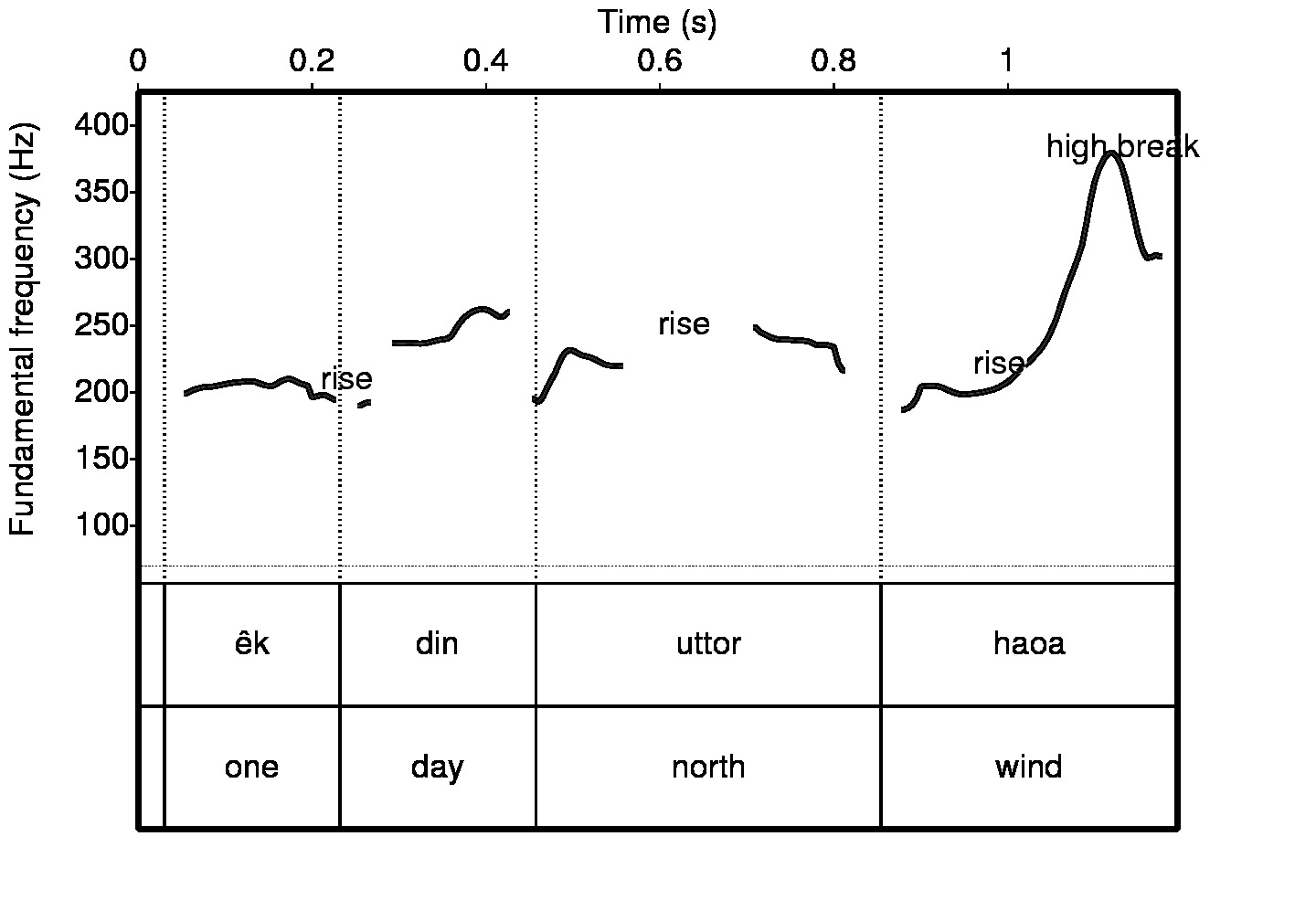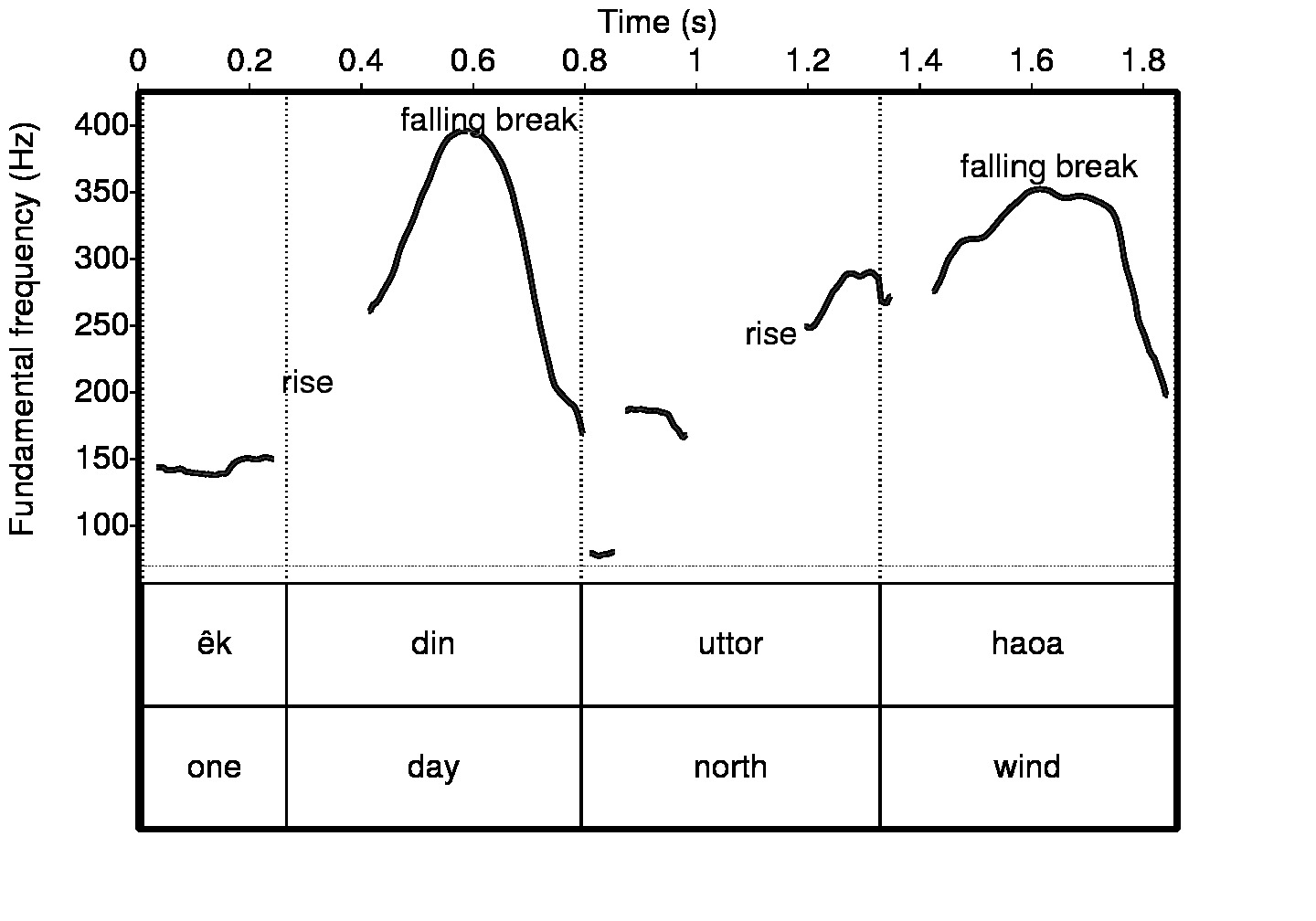
Kristine M. Yu – krisyu@linguist.umass.edu
Department of Linguistics
University of Massachusetts Amherst / University of Maryland College Park
150 Hicks Way / 1401 Marie Mount Hall
Amherst, MA 01003 / College Park, MD 20742
Sameer ud Dowla Khan – sameeruddowlakhan@gmail.com
Department of Cognitive, Linguistic and Psychological Sciences
Brown University
Box 1978
Providence, RI 02912
Alejandrina Cristia – alecristia@gmail.com
Neurobiology of Language Department
Max Planck Institute of Psycholinguistics
Postbus 310
6500 AH Nijmegen, The Netherlands
Huei-Mei Liu – liumei@ntnu.edu.tw
Department of Special Education
National Taiwan Normal University
No. 162, Sec. 1, Heping E. Rd., Da-an District, Taipei City 106
Taipei, Taiwan
Megha Sundara – megha.sundara@humnet.ucla.edu
Department of Linguistics
University of California Los Angeles
3125 Campbell Hall
Los Angeles, CA 90095
Popular version of paper 5aSCa3
Presented Friday morning, November 4, 2011
162nd ASA Meeting, San Diego, Calif.
Have you heard moms and dads talk differently to their infants than to adults? Such speech is commonly called “motherese” or infant-directed speech. A large body of research, mostly on English, has found evidence that infants prefer infant-directed speech to adult-directed speech. Therefore, we and other researchers are interested in understanding if and in what ways infant-directed speech might facilitate infant development.
Perhaps one of the most noticeable differences between infant- and adult-directed speech is that, across languages, infant-directed speech has an exaggerated pitch range. Emotionally engaged adult-directed speech also shows similar exaggerations in pitch range. Thus, the exaggerated pitch range in infant-directed speech is thought to draw the infant’s attention and build emotional rapport.
However, language researchers have also known for many years that how we vary our pitch in speech reflects language structure in addition to emotion, and that how we convey this structure through pitch differs from language to language. Pitch patterns can convey language structure by distinguishing word meanings, distinguishing statements vs. questions, identifying emphasized words, and marking boundaries between words and phrases. For instance, in English, if you want to report that “John went to school”, you pronounce those words with a falling pitch, but if someone follows this with “John went to school?!” to confirm what you just said, the same sentence now ends with a rising pitch. In Mandarin Chinese, though, pitch patterns can distinguish individual word meanings (e.g., pa pronounced in a question-like rising pitch means “to crawl”; while pa with a statement-like falling pitch means “to fear”), and Mandarin speakers use an exaggerated pitch range rather than a rising pitch to say “John went to school?!”. In another scenario, if someone asked you, “Did Bill go to school?”, and you correct him by saying (in English), “John went to school”, there would be a characteristic pitch peak on “John” indicating emphasis. Pitch patterns can also highlight the boundaries between words. For example, French and Bengali have characteristic sequences of rising pitch which clearly and consistently begin and end with each word or small phrase (see Fig. 1). These regular pitch patterns impart a melodic rhythm to speech and may help listeners tell where words begin and end.

Figure 1: A phrase of adult-directed Bengali speech showing the characteristic melodic pattern of successive rises over each word followed by a phrase-final high break. The pitch melody is measured over changes in fundamental frequency, the acoustic correlate of pitch.
In any language, mastering the range of pitch patterns in the language is necessary to understand and convey the intended meaning of phrases and sentences, so we are interested in seeing how pitch patterns in infant-directed speech compare with those in adult-directed speech. Pitch patterns in infant-directed speech may reflect both language structure and emotive and attentional considerations - but how exactly? Is one of these aspects prioritized? Do priorities change across languages? Previous studies cannot answer these questions because they focus only on English, have not controlled the speech materials being compared between adult- and infant-directed speech, and/or have generally analyzed different tune types in terms of their overall communicative intention, rather than their language structure.
In our work, we are studying infant-directed speech in a range of languages with different characteristic pitch patterns: Bengali, English, French, and Mandarin. Because we are interested in studying pitch patterns with reference to language structure, it was crucial for us to keep the speech materials the same for eliciting adult- and infant-directed speech. That way, we could investigate how the parents manipulated pitch differently between the two speech styles, given the same content to convey to the listener. We asked parents of young infants and children to read a story in an adult-directed and infant-directed manner, and we are analyzing the pitch patterns in the recorded speech.
Our preliminary results suggest that pitch patterns in infant-directed speech, as compared to adult-directed speech, may serve the joint purpose of conveying language structure as well as drawing attention and establishing emotional rapport: these goals are not necessarily at cross-purposes. First, it is not the case that the pitch patterns in infant-directed speech that cue language structure are simply not seen in adult-directed speech; rather, it is the distribution of those pitch patterns that is different between the two speech styles. Second, the differing distribution in infant-directed speech appears to be due to two reasons: (1) for drawing attention and establishing emotive rapport, and (2) because the underlying language structure is in fact different between the two speech styles, even if the overt content to be conveyed is the same.

Figure 2: The same phrase of Bengali speech as in Figure 1 uttered as “motherese” (infant-directed speech). The falling pitch pattern in the phrasal breaks, which disrupts the successive rising patterns over each word that can be seen in Figure 1, could occur in adult-directed speech, but is more common in infant-directed speech. The more complex falling breaks as opposed to the high breaks in Figure 1 signal the continuation of a topic in Bengali and might also draw the infant’s attention.
In Bengali and English, for instance, there are more phrase breaks in infant-directed than in adult-directed speech, marked with a variety of pitch patterns—Fig. 2 shows the infant-directed speech version of the same Bengali phrase seen in Fig. 1. The string of words in this figure, uttered in adult-directed speech as successive rises followed by a high-pitched phrasal break, is uttered in infant-directed speech with breaks of falling pitch that disrupt the normal rise pattern. The more variable and complex (e.g. rising-falling or rising-falling-rising vs. just rising) pitch patterns may serve to draw attention and help establish emotive rapport, though at the expense of maintaining the melodic rhythm characteristic in adult-directed speech.
Moreover, the pitch patterns that we find to be used more often in infant-directed than adult-directed speech across languages turn out to be linguistically relevant for the context of infant-directed speech. While the specific pitch patterns differ across languages, they are all associated with marking different kinds of emphasis, indicating to the listener that something is (1) being mentioned for the first time, (2) contrasted with something previously mentioned, (3) unexpected or surprising, (4) or serving as the topic that to be discussed.
In summary, our results thus far suggest that while the pitch patterns of infant-directed speech are the same as those seen in adult-directed speech, the greater use of particular patterns might serve both to draw attention and establish emotive rapport---which could boost cognitive development in general---and to convey language structure relevant to an infant listener.